STRAIN DISTRIBUTION ON A CURVED BEAM: DIC VS. FEM
KEYWORDS
- Strain measurement
- Bending load
- Steel curved beam
- 2D measurement
TEST SET-UP
- Single 9 MPx camera
- 60 mm photographic lens
- Alpha DIC® modules: DIC, CL
- Measuring tools:
- DIC Area
- Crack Probe
- DIC Area
- Steel curved beam sample
OUTPUT
- Full-field strain distribution
- Line strain distribution (perpendicular)

The planar curved beam under bending load was used to demonstrate the possibilities to obtain the strain distribution on the surface of the sample and compare it with the FEM calculation, the 2D DIC system containing a 9 MPx camera and a 60 mm photographic lens was used to obtain sufficient resolution at the higher working distance of the system. Uniform illumination was ensured by symmetrically placed lights.
The flat sample was in the shape of a semicircle, loaded at its sides in the direction perpendicular to the axis of curvature. The area of interest was in the middle of the semicircle, where the greatest bending moment was expected to occur. A speckle pattern was created on the surface of the sample to enhance the image correlation.
After the system was set up, calibration was performed using the calibration grid. For the test, the tensile testing machine was used, but due to the clamping configuration and the shape of the sample, the bending load is induced.
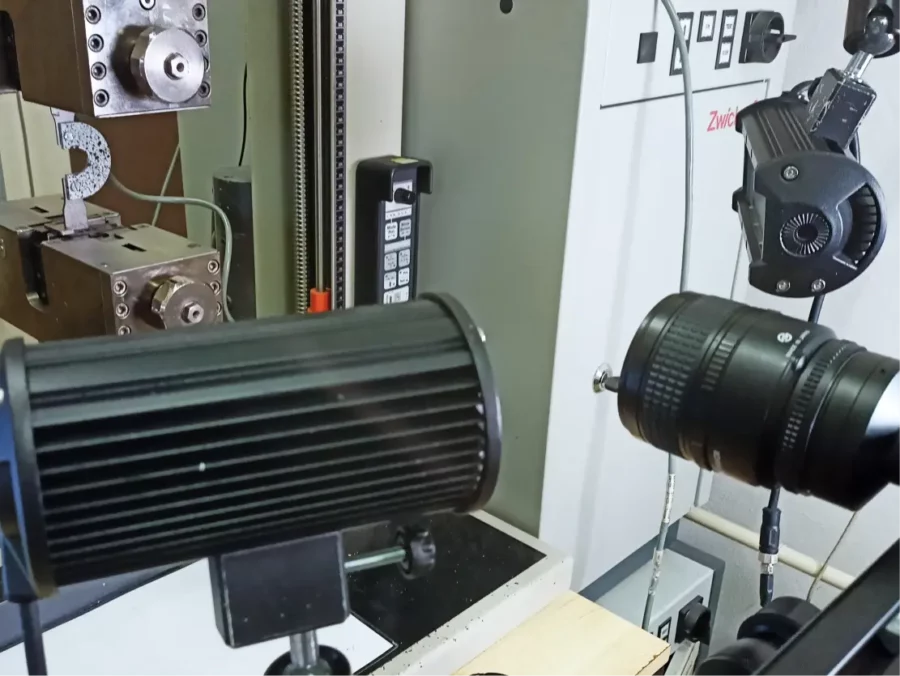
WHY CHOOSE X-SIGHT?
- Strain analysis software Alpha – simple to use but complex in features
- Strain easily measurable anywhere on the specimen’s visible surface
- Versatile real-time measurements and powerful post-processing
TOOLS, POSTPROCESSING AND RESULTS
The DIC Area tool was used at the location with the highest bending moment to capture the full-field axial strain distribution.
In addition, a FEM calculation was performed with boundary conditions that faithfully represent the test setup. The results obtained by both methods correspond very well both qualitatively and quantitatively. The crack probe was used to obtain the line strain distribution in the maximum bending moment area along the section perpendicular to the axis of curvature of the sample.
The probe creates an arbitrary number of line probes perpendicular to the line that connects the starting and ending point of the probe (distinctly purple in the image).
The result graph shows a good match between the DIC and FEM results, including the hyperbolic shape of the curve, which is predicted by the available theory.
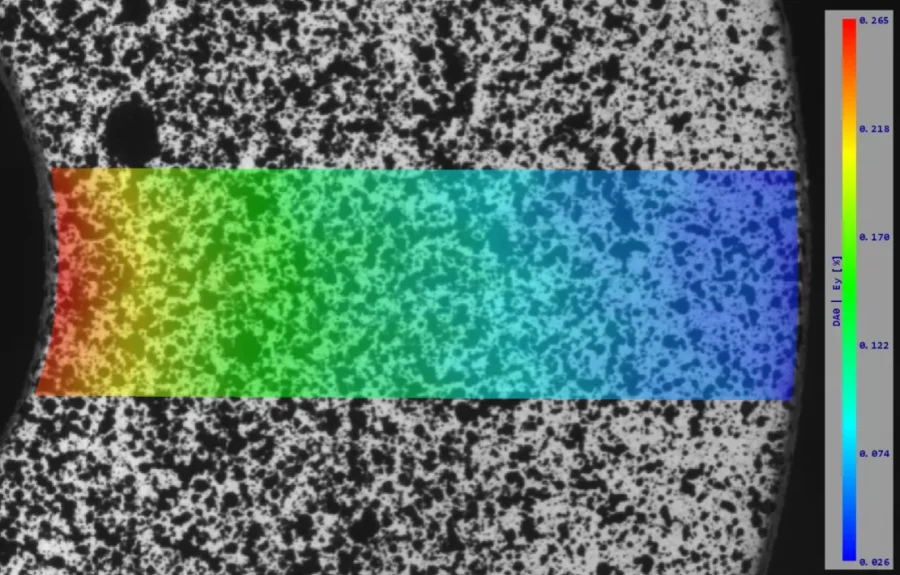
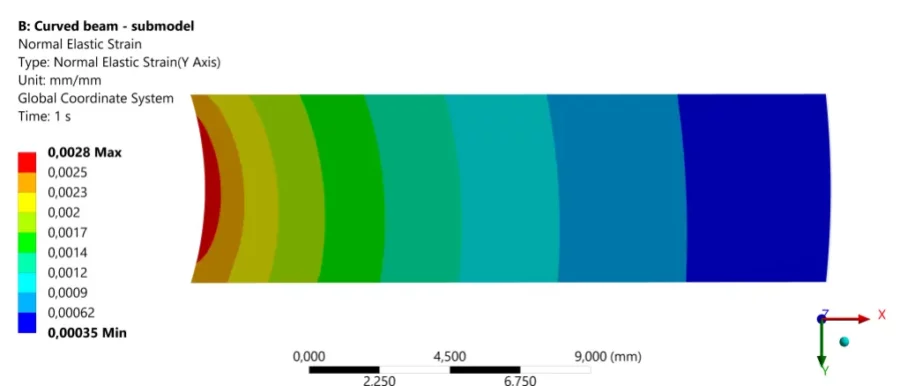
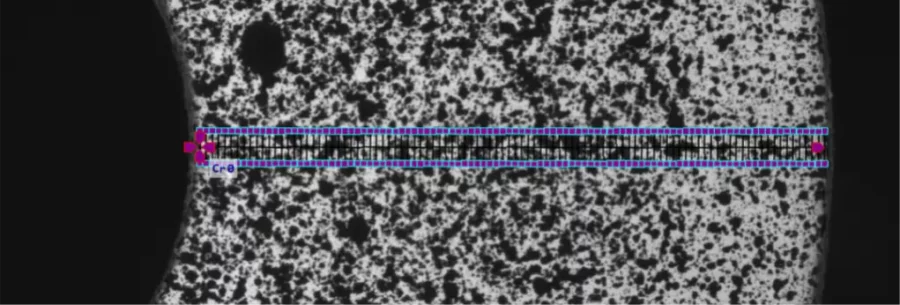
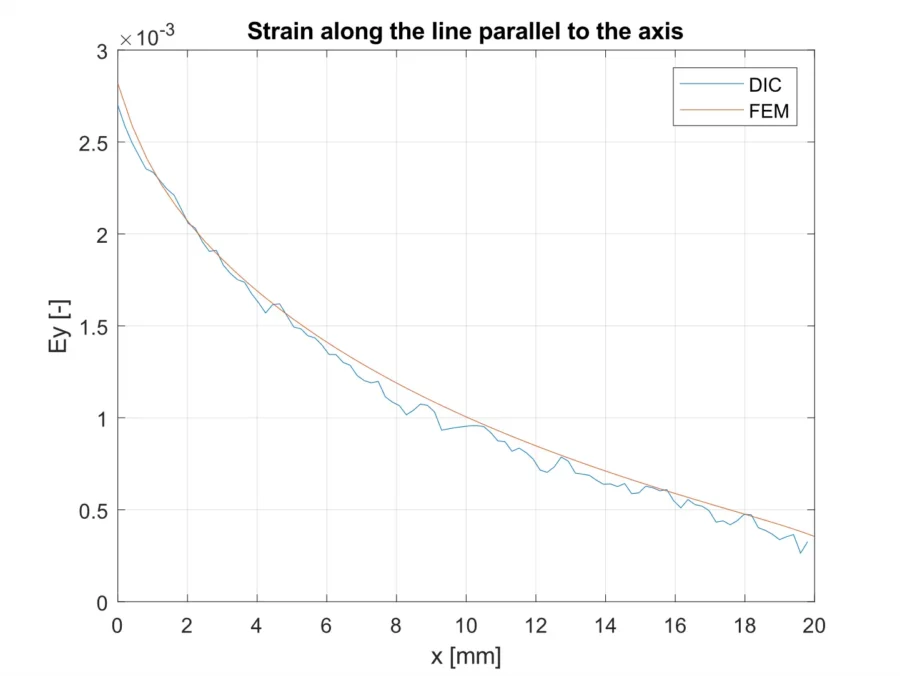
🗎 Download PDF version of this report here